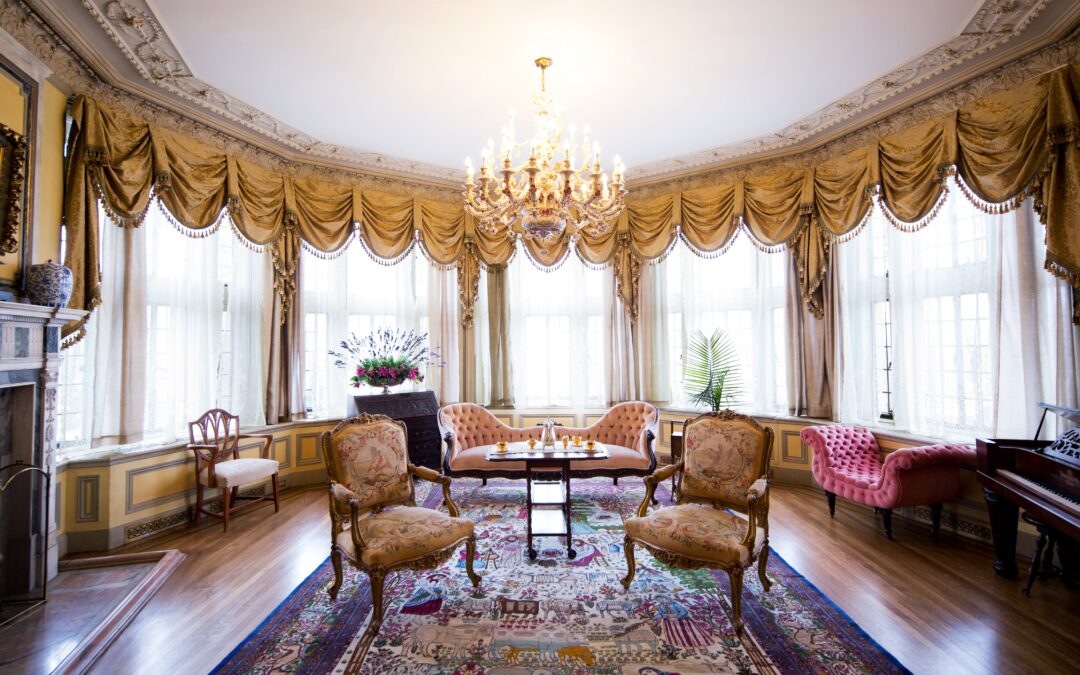Interior design is more than just arranging furniture and choosing paint colors; it’s an intricate dance between creativity and functionality that transforms spaces into reflections of our personalities and lifestyles. Whether you’re decorating a new home, renovating an existing one, or simply refreshing a room, understanding the principles of interior design can help you create a space that is both beautiful and practical.
The Foundations of Interior Design
1. **Balance**: Achieving balance involves distributing visual weight in a room to create a sense of equilibrium. There are three types of balance to consider:
– **Symmetrical Balance**: Often found in traditional interiors, this balance is achieved by mirroring objects on either side of a central point.
– **Asymmetrical Balance**: More dynamic and less formal, asymmetrical balance involves different objects that have equal visual weight or eye attraction.
– **Radial Balance**: This is when elements are arranged around a central focal point, like a round dining table with chairs around it.
2. **Harmony and Unity**: A well-designed space should feel cohesive and unified. Harmony is achieved when all elements in a room complement each other, creating a consistent theme or style.
3. **Rhythm**: This principle guides the eye around the room, creating a sense of movement. Rhythm can be established through repetition (repeating elements like colors or patterns), progression (increasing or decreasing size of elements), or transition (leading the eye smoothly from one area to another).
4. **Contrast**: Contrast adds visual interest by juxtaposing different elements. This can be done with color (light vs. dark), texture (smooth vs. rough), and shapes (curved vs. straight).
5. **Scale and Proportion**: These principles ensure that objects fit well within a space. Scale refers to the size of objects in relation to each other, while proportion refers to the ratio between the size of different elements.
Key Elements in Interior Design
1. **Color**: Color sets the mood and atmosphere of a space. Different colors can evoke various emotions and responses. For instance, blue is often associated with calm and serenity, while red can evoke passion and energy.
2. **Lighting**: Good lighting can transform a space, highlighting architectural features and creating depth. Layered lighting (ambient, task, and accent) ensures a room is functional and visually appealing.
3. **Furniture and Layout**: Furniture should be both stylish and functional. The layout of furniture is crucial for creating a flow and ensuring the room is usable and comfortable. Consider the scale of the furniture in relation to the room size and ensure there is enough space for movement.
4. **Textures and Patterns**: These add depth and interest to a space. Mixing different textures (like a velvet sofa with a glass coffee table) and patterns (like stripes with florals) can create a rich, layered look.
5. **Accessories and Art**: Personal touches like artwork, plants, and decorative objects bring a space to life. They reflect your personality and can be easily changed to update the look of a room.
Trends and Styles
Interior design trends evolve, reflecting cultural shifts and technological advancements. Some current trends include:
– **Sustainable Design**: Eco-friendly materials and energy-efficient designs are becoming increasingly popular as more people seek to reduce their environmental footprint.
– **Minimalism**: This style focuses on simplicity and functionality, with a “less is more” approach.
– **Maximalism**: In contrast to minimalism, maximalism embraces bold colors, patterns, and a mix of styles.
– **Biophilic Design**: Incorporating natural elements like plants, natural light, and organic materials to create a connection with nature.
– **Smart Homes**: Integrating technology seamlessly into home design for convenience and efficiency.
Bringing It All Together
Creating a beautiful and functional space requires a thoughtful approach that considers both aesthetics and practicality. Whether you’re a seasoned designer or a novice decorating your first home, understanding the principles and elements of interior design can help you make informed decisions and create a space that truly feels like home.
Interior design is not just about making a space look good—it’s about making it work for you and your lifestyle. So, take the time to explore different styles, experiment with colors and textures, and most importantly, have fun with the process. Your home is a canvas, and with the right design principles, you can create a masterpiece.
561-625-9569
consign@truetreasuresinc.com


Recent Comments